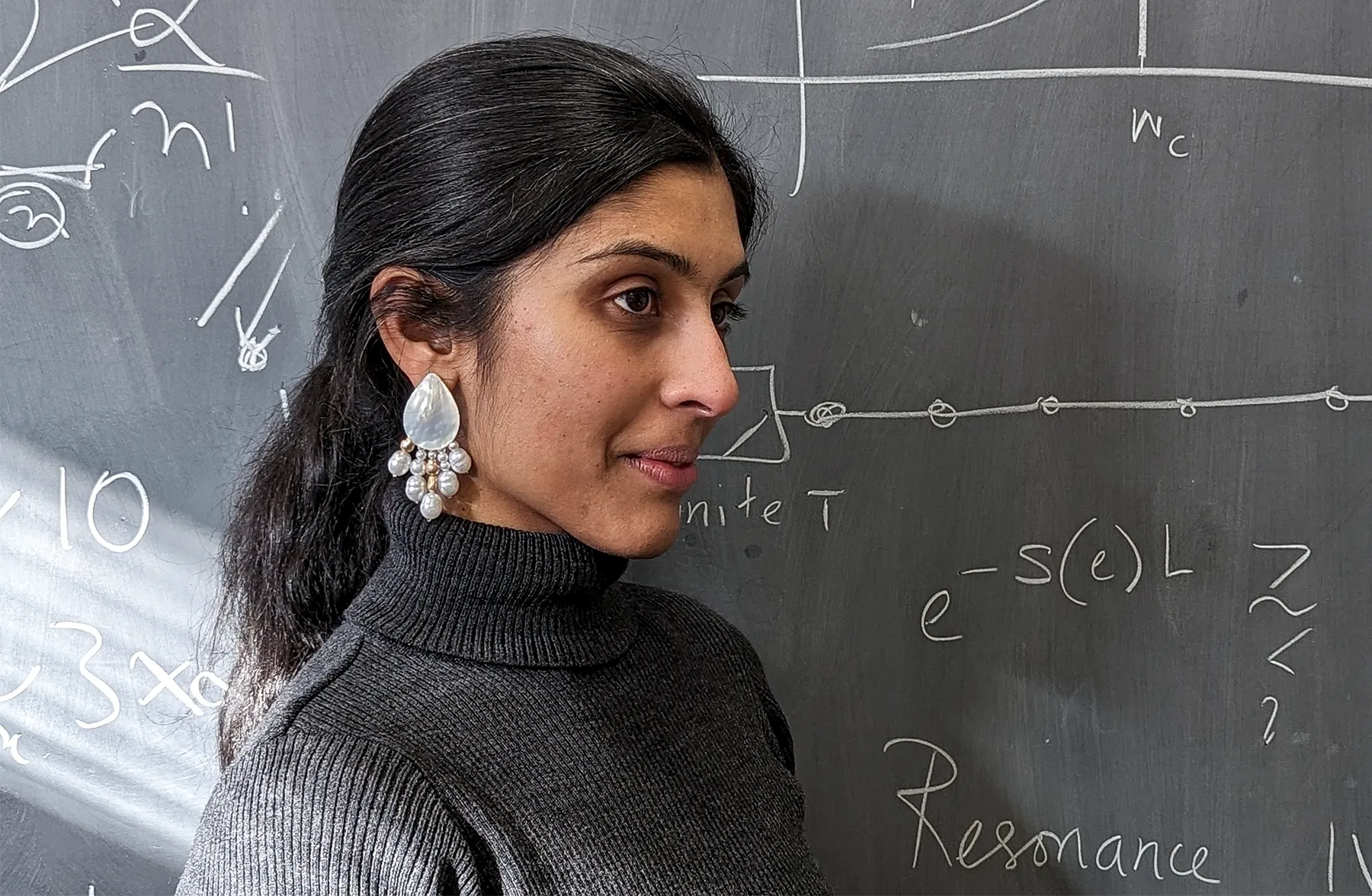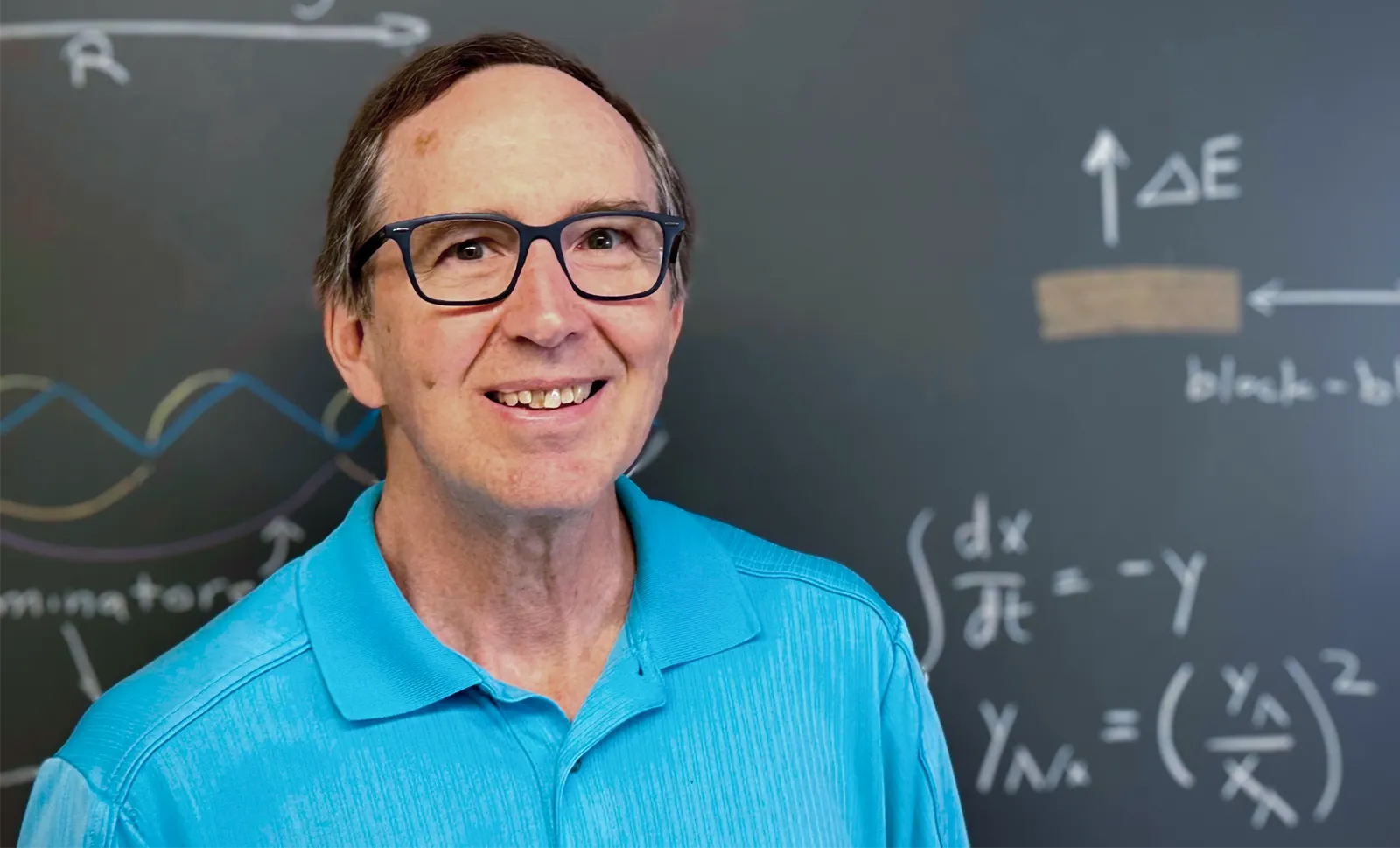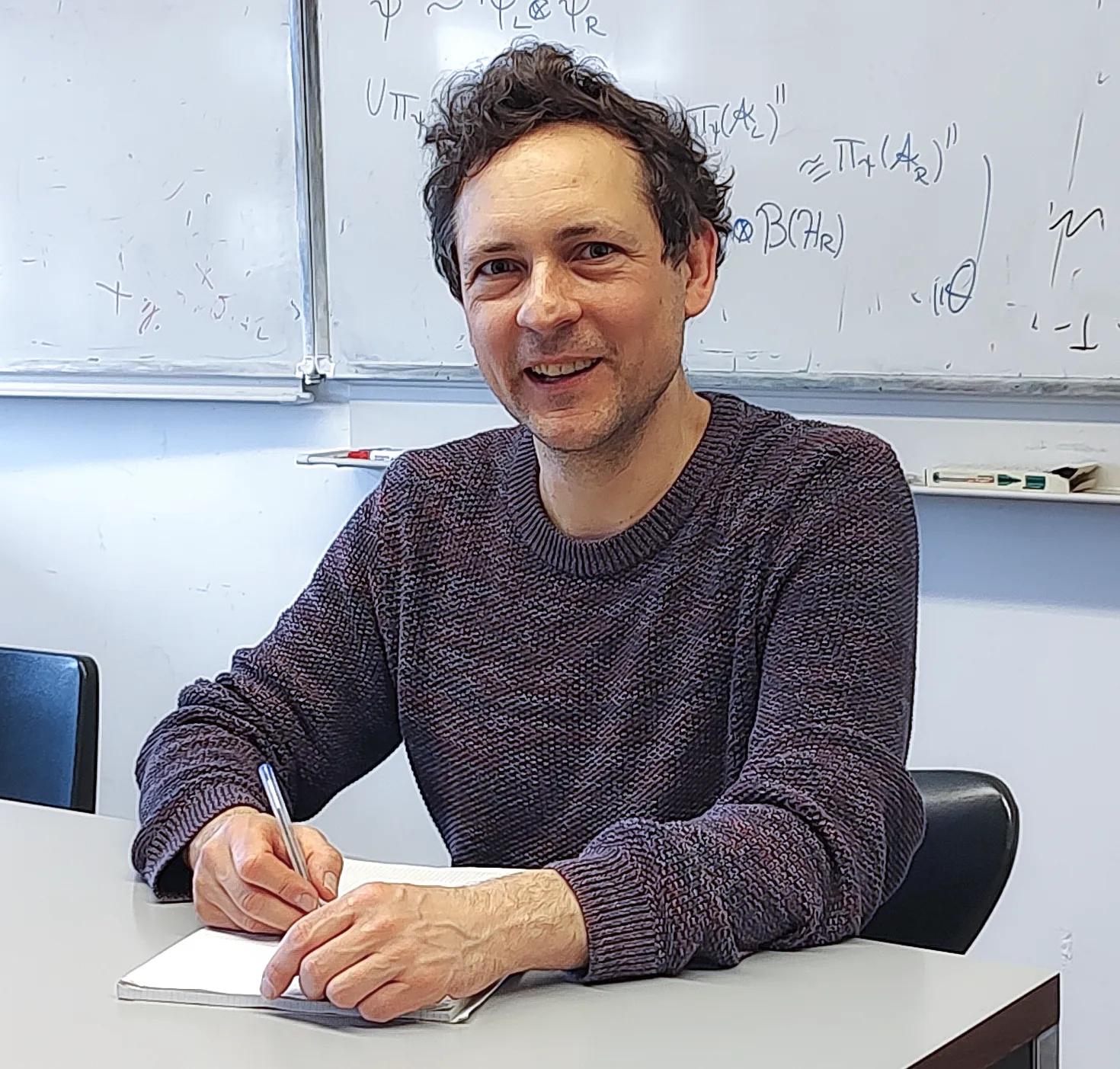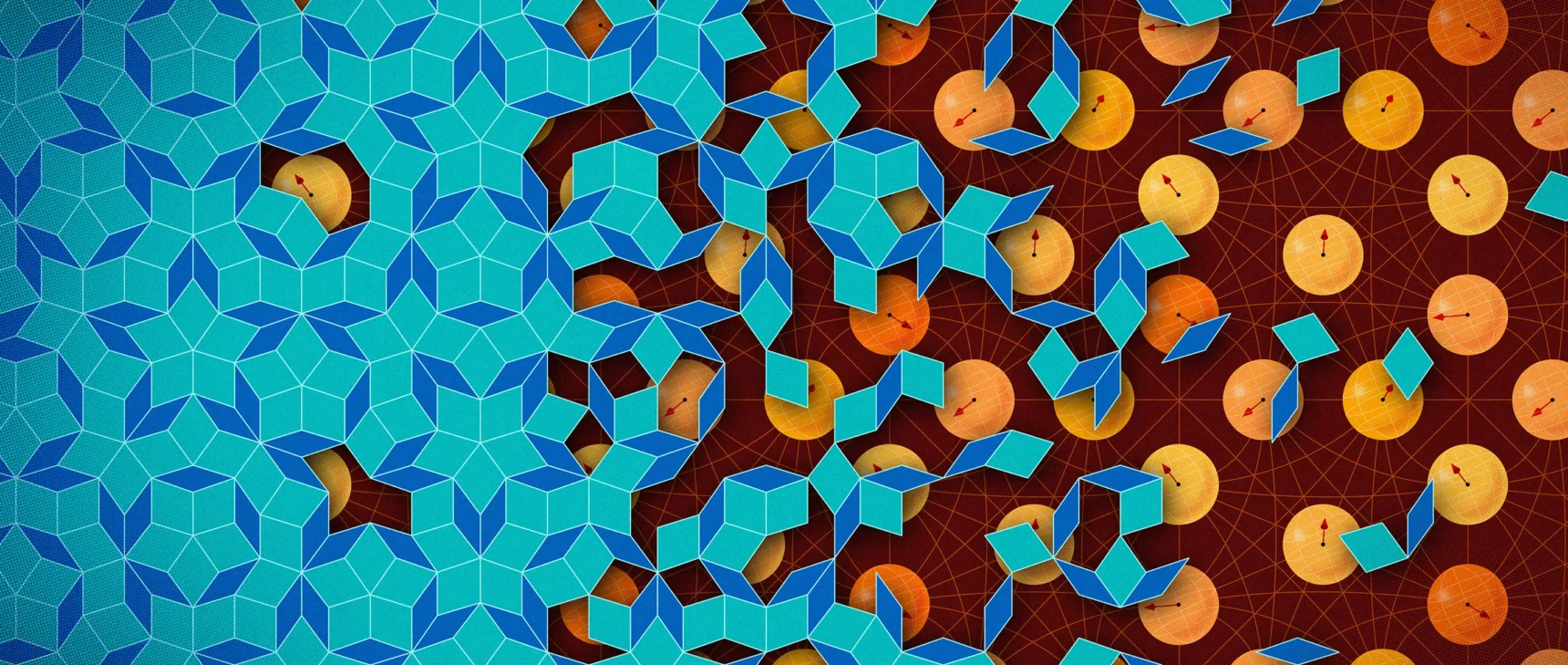A Quantum Trick Implied Eternal Stability. Now the Idea May Be Falling Apart.

Are certain quantum systems eternal, or do they just appear to be so?
Nash Weerasekera for Quanta Magazine
Introduction
It is a truth of both physics and everyday experience that things fall apart. Ice melts. Buildings crumble. Any object, if you wait long enough, gets mixed up with itself and its surroundings beyond recognition.
But beginning in 2005, a series of breakthroughs made this death march seem optional. In just the right quantum setting, any arrangement of electrons or atoms would stay put for all eternity — even uneven arrangements thrumming with activity. The finding flew in the face of the conventional wisdom that quantum phenomena were fragile things, observable only at extremely low temperatures. It also punched a hole in the foundations of thermodynamics, the venerable branch of physics that explains phenomena like heat and entropy as inevitable consequences of the interplay of vast swarms of particles.
The results came as a shock to physicists like Norman Yao, a graduate student at the time who is now a professor at Harvard University. “Holy hell,” he recalled thinking, using a stronger word than hell. “If this is true in an interacting, many-particle system, then statistical mechanics fails. Thermodynamics fails.”
The notion of a radical new quantum stability spread. It inspired theorists to conjure up a menagerie of new phases of quantum matter such as time crystals — systems that sustain a repeating behavior indefinitely without absorbing energy. And quantum engineers battling the skittishness of qubits to build quantum computers took heart at this indication that their fight was a winnable one.
“In a quantum computer you need to have memory of your initial conditions; otherwise you can’t do anything,” Yao said.
The accumulation of evidence peaked in 2014 with a rigorous mathematical proof that quantum patterns could indeed last forever.
In recent years, however, the promise of eternally stable quantum structures has itself begun to wobble. Such patterns can indeed last for eons, as the breakthrough experiments found. But a debate rages as to whether those eons can truly stretch out to eternity, as many physicists have believed. In the course of dissecting the fundamental nature of quantum fate, the physicists involved have discovered previously unknown quantum phenomena that threaten the stability of great hordes of particles.
“You thought you understood [this idea] really well, and now you don’t,” said Vedika Khemani, a physicist at Stanford University. “That’s fun. There’s a mystery to solve again.”
A Taste of Eternity
An early intimation of quantum eternity was picked up by Phil Anderson, a physicist who would become a legend in his field. In the 1950s, Anderson was at Bell Labs studying what was then bleeding-edge physics — the behavior of electrons inside semiconductors. While trying to understand some puzzling experimental results, he found himself thinking about a more abstract problem.
Was it possible, Anderson wondered, to trap a single quantum particle in place?
It’s easy to trap a classical object, such as a billiard ball. Just surround it with barriers, like the rails of a billiard table. But quantum particles can travel with complete disregard for barriers by “tunneling” through them. The catch is that they can’t travel far. Tunneling becomes hard — that is, exponentially unlikely — the further a particle tries to go. Anderson wondered what surroundings could contain a quantum escape artist.
The secret, he found, was to stick the particle in a “disordered” quantum landscape, one dotted with peaks and valleys. Each location would have a random height, representing a random energy. In a real material, this disorder might come from impurities such as missing atoms or atoms of different elements.
With enough disorder, Anderson concluded, a particle would never tunnel far. In order to tunnel, a particle needs to find a location with a similar energy (or at a similar altitude) to the one it starts out in. And more disorder makes such sites scarcer. By looking further into the landscape, a particle might be able to scout candidate sites at a decent clip. This rate could be quite fast in “higher” dimensions like 2D planes and 3D bricks, where the particle has more options available to it. But the exponential difficulty of reaching those locations would always rise even faster, making tunneling an unlikely proposition.
Merrill Sherman/Quanta Magazine
Tunneling was not enough, Anderson argued in a 1958 paper. A disordered landscape of any dimension would “localize” a particle. The work went essentially unread for years, although it would eventually help secure him a share of the 1977 Nobel Prize in Physics.
While Anderson’s musings had been inspired by electrons in a semiconductor, his framing reveals that he was thinking more abstractly. The anomaly that had motivated him was a mysterious resistance among electrons to a process known as thermalization. He sought to understand more deeply when a system would or would not thermalize. He was not the first physicist to study this phenomenon, but the questions he raised in his work would capture the imaginations of a later generation of physicists.
“It was 50 years ahead of its time,” said David Huse, a physicist at Princeton University.
In everyday language, thermalization is the natural tendency for systems to get mixed up. A new deck of cards quickly loses its original order. A sandcastle winds up as a wet lump of sand. In thermodynamics, this trend is a straightforward consequence of statistics. There are just a few ways to be ordered and a tremendous number of ways to be mixed up, so an initially ordered system is extremely likely to end up mixed.
The key feature of thermalization is that any initial patterns get wiped out by the mixing. Any initial hot spot or concentration of energy, for instance, spreads out until no further spreading is possible. At this point, the system becomes stable and stops noticeably changing — a scenario physicists refer to as thermal equilibrium.
In retrospect, physicists see that Anderson’s work contained the seeds of a rebellion against thermalization. He had shown that a disordered landscape could trap one particle. The key question became: Could it localize many particles? If particles became stuck in place, energy would not spread, and a system would never thermalize. As the opposite of thermalization, localization would represent a whole new type of stability, an unexpected way for quantum patterns of energy to persist forever.
“Knowing whether thermalization is this universal thing that will happen in a closed system, or whether it can completely break down,” said Maissam Barkeshli, a physicist at the University of Maryland, “is one of the most fundamental questions in physics.”
Answering that question, however, would require solving a problem that made Anderson’s Nobel Prize-winning work seem like a warmup. The basic issue is that groups of particles can influence each other in colossally complex ways. Accounting for these interactions proved so complicated that nearly 50 years would elapse between Anderson’s 1958 paper and the first serious attempts to understand localization in many-particle systems, which physicists call many-body localization.
The unbelievable answer that would emerge, half a century later, was that thermalization is not always inevitable. In defiance of thermalization, many-body localization seemed possible.
“It breaks the laws of thermodynamics,” said Wojciech De Roeck, a physicist at KU Leuven in Belgium. “It means that chaos does not always win.”
The Rise of Many-Body Localization
The blockbuster sequel to Anderson’s work came in 2005, when Denis Basko, Igor Aleiner and Boris Altshuler, physicists with affiliations at Princeton and Columbia universities, published a landmark paper that would make their initials instantly recognizable to researchers in the field. In it, BAA studied whether atomic impurities in a metal could localize electrons, trapping them near atoms and transforming the conducting material into an insulator.
In 88 pages of dense math comprising 173 numbered equations and 24 figures (excluding appendices), BAA showed that a messy material could indeed stop groups of electrons in their tracks, much as Anderson had shown that it could stop one particle. Their work effectively launched the study of many-body localization, or MBL.
“It really was a tour de force,” Khemani said. “They showed that MBL is stable in all dimensions.” The work was also impenetrable. Researchers believed it but didn’t understand it well enough to build upon it. “Nobody could really do the BAA calculation other than them,” said Jed Pixley, a condensed matter physicist at Rutgers University.
But BAA’s finding did send ripples across the Princeton campus. Basko told his friend Vadim Oganesyan, who discussed it with his adviser, David Huse. The two of them were already running computer simulations that would allow them to test BAA’s ideas more directly in the more abstract context of thermalization.
In their simulations, Huse and Oganesyan set up chains of quantum particles that could point up or down and could flip their neighbors. When they added more and more disorder, as per the localization recipe, they saw signs that the chains of particles were switching from a thermalizing scenario (where, say, a rapidly flipping particle would spread its energy and start flipping its neighbors) to a nearly localized scenario (where the particle would hold onto its energy). The transition from thermalization to localization at a certain level of disorder looked rather like transitions between phases of matter, such as between liquid and ice, that occur at a certain temperature.
Merrill Sherman/Quanta Magazine
Could MBL qualify as a phase of sorts? Phases hold a special status in physics. They also have a special definition. Crucially, a phase of matter must be stable for an infinitely long time period, and for an infinitely large system. If indeed there was a transition between thermalization and localization, and if localization occurred indefinitely for infinite systems, perhaps the two types of stability could be thought of as phases in their own right.
Oganesyan and Huse couldn’t simulate infinitely long chains for infinitely long times (they could do around a dozen particles), so they weren’t surprised that they saw imperfect signs of localization. But as they made their chains longer, the transition to localization got sharper. Their first work, posted in 2006, teased the intriguing possibility that for infinitely long chains with enough disorder, a localizing phase could exist.
Perhaps more importantly, their simulations were easy to understand. “David made the calculation so anybody could do it,” Pixley said.
Subsequent numerical studies supported the notion that a rugged landscape could localize energy, and physicists began to consider the implications. Deluges of energy, often in the form of heat, wipe out delicate phases of quantum matter. But if sufficiently jagged peaks could halt the spread of energy, quantum structures might survive at effectively any temperature. “You are able to obtain phenomena that we really associate and only understand at zero temperature,” said Anushya Chandran, a physicist at Boston University who studied MBL as a Princeton graduate student.

Anushya Chandran, a physicist at Boston University, helped explain how systems too small for avalanches can get mixed up by “resonances.”
Sam Grieves
One high-profile quantum structure to grow out of MBL was a pattern in time. Flip one end of a chain of particles at a certain rate, and the entire chain could flip between two configurations without absorbing any of the energy from the flipping. These “time crystals” were an exotic out-of-equilibrium phase of matter, which was possible only because a sufficiently disordered landscape stopped any conceivable arrangement of particles from reaching thermal equilibrium.
“There’s just no analogue,” said Khemani, who came through Princeton around this time and would go on to play a pioneering role in understanding and creating time crystals. “That’s a complete paradigm shift.”
The final piece of the theoretical puzzle fell into place in 2014, when John Imbrie, a mathematical physicist at the University of Virginia, showed that if you could string together an infinitely long chain of particles with enough disorder, any configuration would stay localized. Despite the ability of the particles to interact with their neighbors, they would individually continue to do their own thing forever.
The rigorous mathematical proof, the likes of which are rare in physics, was the result of five years of effort. It all but guaranteed that localization was possible, solidifying its status as a phase. “When you do a mathematical argument, you have to consider every possibility,” Imbrie said. “That’s part of the beauty.”
Around the same time, physicists with labs specializing in manipulating cold atoms were confirming that real particles behaved in much the same way that digital ones did. Modest numbers of atoms separated by mountains of light spread out at a glacial pace, both when arranged in 1D lines and when arrayed in 2D grids.
With a preponderance of experimental, mathematical and numerical evidence, MBL seemed destined to enter the pantheon of phase transitions alongside magnetism and superconductivity. Physicists expected that a wide variety of different systems in different dimensions could flagrantly disregard their presumed thermodynamic fate.
In 2022, the American Physical Society awarded Altshuler, Huse and Aleiner the prestigious Lars Onsager Prize, named for the mathematical physicist who proved that a cartoon model captured the phase transition as a material became magnetized.
But even before the prizes were given out, the idea of infinitely durable structures had begun to fall apart.
The Start of the Wobble
The first tremor came about a year and a half after Imbrie’s proof.
Recall that the transition from thermalization to localization is thought to go down like transitions between familiar phases of matter. When metal magnetizes, for instance, certain properties change at particular rates, described by meticulously calculated equations. Particular values in these equations have certain exponents, like the 2 in x2.

John Imbrie, a mathematician at the University of Virginia, published a rigorous mathematical proof of MBL’s existence in 2014.
Dallas Pitt
For a true phase transition in one dimension, mathematicians had proved that two of these exponents must be greater than 2. But the MBL simulations had found them to be 1 — a major disagreement. In a still-unpublished preprint posted in 2015, Oganesyan and Chandran, together with Christopher Laumann of Boston University, showed that the mismatch was not just a trivial side effect of studying short chains rather than infinite ones. Something more fundamental seemed off.
“They looked into it carefully,” Huse said. “But we couldn’t figure out what was wrong.”
A string of bigger shocks came over the next few years. Imagine the kind of mountainous landscape that would lead to MBL. Now extend that landscape to infinity in all directions. If you randomly explore enough of it, at some point you’re bound to run into an extended flat patch.
Particles in a flat zone can easily find states of similar energy to tunnel to, so they mingle and thermalize. In such a region, energy states abound, increasing the odds that a particle in the neighboring mountains could make contact and become thermalized itself, argued De Roeck of KU Leuven and François Huveneers, who was then at the University of Paris-Dauphine in France. Thus, the flat zone can serve as a source of thermalizing energy.
But could such a tiny patch take down the whole system? The scenario intuitively seemed about as plausible as a hot tub in Denver causing meltdowns in Vail, Breckenridge and Telluride. Physicists didn’t accept it right away. When De Roeck and Huveneers raised the possibility at conferences, their talks provoked angry outbursts from the audience.
“It was a big surprise,” De Roeck said. “A lot of people in the beginning did not believe us.”
In a series of papers starting in 2016, De Roeck, Huveneers and collaborators laid out their case for a process now known as an avalanche. They argued that, unlike a hot tub, what starts as a drop of thermalized particles can snowball into an ocean.
“You have a heat bath, and it recruits neighboring sites into the heat bath,” Imbrie said. “It gets stronger and stronger and pulls in more and more sites. That’s the avalanche.”
The crucial question was whether an avalanche would gain momentum or lose it. With each step, the heat bath would indeed become a bigger and better energy reservoir. But each step also made thermalizing the next site harder. Reminiscent of Anderson’s single-particle localization, the debate came down to a race between two effects: the bath’s improvement versus its difficulty in growing further.
De Roeck and Huveneers argued that avalanches would win in two and three dimensions, because they stockpiled energy states incredibly quickly — at rates related to their rapidly growing area (in 2D) or volume (in 3D). Most physicists came to accept that avalanches in these landscapes were unstoppable, making MBL a remote prospect in sheets or bricks.
But the possibility of MBL in one-dimensional chains survived, because an avalanche sweeping across a line accrues energy states more slowly. In fact, the heat bath grows more powerful at about the same rate at which the difficulty of growth rises. It was a tie. Avalanches might continue in 1D, or they might stop.
Other physicists, meanwhile, grew skeptical that MBL could exist even in a 1D chain. In 2019, a team of Slovenian chaos experts including Tomaž Prosen reanalyzed old numerical data and highlighted the fact that as the landscape got more mountainous, thermalization slowed tremendously but never completely stopped — an inconvenient truth MBL researchers had taken to be an artifact of their small-scale simulations. Anatoli Polkovnikov of Boston University and Dries Sels, now of New York University and the Flatiron Institute, among other researchers, came to similar conclusions. Their arguments directly challenged the central allure of MBL: the promise of eternal life for a quantum sandcastle.
“At the level of theorists talking about MBL,” Chandran said, “there’s an honest-to-God regime where [the thermalization time] is not just age of the universe, and we can’t see it. No, it’s truly infinite.”
A vigorous debate followed, both in the academic literature and in private discussions. Sels and Huse spent hours on Zoom during the depths of the pandemic. They talked past each other at times, but each credits the other with productive insights. The ins and outs of the controversy are extremely technical, and not even the researchers involved can fully articulate all the perspectives. But ultimately, their differences come down to each camp making a different educated — extremely educated — guess as to what you would see if you could watch a chain of particles flip forever.
The two sides still disagree about whether a genuine MBL phase exists in one dimension, but one concrete result of the clash is that it drove researchers to scrutinize the effect that avalanches might have on the presumed onset of MBL.
The skeptical groups “had some very good points, but they took them a little too far,” Huse said. “It really got us motivated.”
Huse, collaborating with a team of MBL veterans including Khemani, cooked up a way to simulate the effect of an avalanche on short chains without actually triggering one. (No one has seen an avalanche, even numerically, because to get a big enough flat spot you might need a chain billions of particles long, Sels estimates, and researchers typically study chains of about 12.) Sels subsequently developed his own avalanche mock-up.
The two groups came to similar conclusions in 2021: The MBL transition, if it existed, required a much more mountainous landscape than researchers had believed. With the ruggedness level previously thought to bring about MBL, thermalization would slow, but would not stop. To give quantum snowmen a fighting chance against avalanches, the landscape would have to be more disordered than Huse and company had suspected. Huse’s group initially found that the mountains would need to be least twice as rugged. Sels’ work pushed that number up to at least six times as rugged, making the mountains more like Himalayas than Rockies. MBL may still occur in those extreme settings, but the theory that had been built around the less rugged transition did indeed have problems.
“We sort of accepted it too thoroughly, and we didn’t look at the subtleties of it,” Huse said.
In the 2021 works, the researchers rewrote and expanded the MBL phase diagram for 1D chains. In Kansas-like flatlands, particles thermalize quickly. In the Rockies, the researchers reclassified the MBL “phase” as a “pre-thermal regime.” This is the seemingly stable regime discovered by BAA, the Princeton simulations, and atomic experiments. But now the researchers had concluded that if one waited an extremely long time — literally billions of years for some setups — particles separated by the Rockies would in fact mingle and thermalize.
Beyond the Rockies lie the Himalayas. What happens there remains an open question. Sels and Prosen are convinced that energy will spread and thermalization will eventually occur, even if it takes eons. Huse and company continue to believe that genuine MBL sets in.
Chief among their reasons for belief in MBL is the 2014 proof. Of the once numerous pillars of evidence supporting the existence of true MBL, Imbrie’s proof is the last one standing. And after a career developing bespoke mathematical tools for just this type of problem, he stands by it.
“It’s not unheard of in mathematics to have an error in a proof,” he said, “but I think I know what I’m doing.”
The proof divides physicists, however, because physicists don’t understand it. It isn’t for lack of trying. Laumann once got Imbrie to teach the proof to him and a handful of researchers over the course of a week in Italy, but they couldn’t follow the steps in detail. That’s not entirely surprising, though, as physicists typically use mathematics in a faster and looser way than mathematicians do. Imbrie’s argument doesn’t depend on any specific level of ruggedness in the landscape, so the recent revisions to the MBL phase diagram in no way undermine it. To determine whether MBL truly exists, researchers will need to buckle down and either find a problem in the proof or verify every line.

Wojciech De Roeck of KU Leuven in Belgium helped show that tiny patches of order could destabilize a vast and disordered landscape.
Faezeh Khodabandehlou
Such efforts are underway. Sels and collaborators say they’re finalizing an argument that will contradict Imbrie’s. Meanwhile, De Roeck and Huveneers, the mathematicians who discovered the threat of avalanches, are two years into an effort to rewrite Imbrie’s proof in a more accessible form. De Roeck says they’ve put all the major pieces in place, and so far the logic looks solid.
“MBL, I believe it exists,” De Roeck said. But “we’re doing mathematics here, so any small problem can derail the whole thing.”
Beyond Quantum Angels
In the universe we inhabit, which will itself thermalize in some incomprehensible number of years, permanence is always something of an illusion. Manhattan is sinking under its own weight at 1.6 centimeters per decade. The continents will merge in roughly 250 million years. And while it’s a myth that the bottoms of medieval stained-glass windows have thickened slightly over the centuries, physicists do believe that glass flows over some unknown timescale, likely many billions of years or more.
If MBL proves unstable, a many-body localized system will be at least as durable as any of these examples. So will those quantum phenomena that depend on MBL states. Time crystals, for instance, might lose their textbook designations as “phases of matter,” but they’d still be able to keep ticking for far, far longer than the quantum computers that simulate them (or the humans that operate the computers, for that matter). Many academics do care deeply about the mathematical possibility of defeating thermalization as the beautiful, academic question that it is. But these days, most aren’t losing much sleep over it.
“Maybe it was always angels dancing on the head of a pin,” Chandran said.
Instead, Chandran and others have reveled in the chance to discover a new thermalization-causing phenomenon, one that physicists might actually observe in small systems.
Back in 2018, she and her collaborator Philip Crowley had set out to understand why small chains appeared to slowly thermalize even though they were far too small for flat spots to crop up. The duo determined that groups of particles were occasionally getting lucky and borrowing energy from a neighboring group in the exact amount they needed to flip to a new configuration. They dubbed these coincidences “resonances” and observed how they tended to spread from group to group, leading to a drawn-out thermalization in systems too small for avalanches. In 2020, they showed that resonances can explain the 2015 exponent mismatch and many of the fishy features that have been showing up in numerical experiments, insights that helped Huse and company update the phase diagram for short chains in 2021.
Today, physicists believe that resonances destabilize modest chains with Rockies-level disorder, while avalanches destabilize longer chains at higher levels of disorder.
As Chandran and others improve their simulations and experiments and explore longer, more rugged chains, they wonder what else might lurk in the Himalayas and beyond.
“It seems like there is other physics going on in there,” Huse said. “That would be nicest for me. I like finding new things.”
Editor’s note: A few researchers who appear in this article have received funding from the Simons Foundation, which also funds this editorially independent magazine. Simons Foundation funding decisions have no influence on our coverage. More details available here.



